
Employee recognition plays a very pivotal role in having more engaged employees. Engaged employees contribute to the overall productivity of the organization. So, how to reach the employees and have them know that they are seen and appreciated?
This is where a critical component of the modern business strategy, like employee reward programs, gets highlighted. Such a rewards program ensures that the company has a strategy to attract and retain top talent to their organization.
So, how can you build the right employee awards program? The answer to this lies in drawing a clear distinction between employee recognition and employee rewards.
The different types of employee rewards include:
Financial rewards - Monetary rewards include financial rewards like monthly salary, compensations, employee stock options, equity for employees, additional bonuses, employee incentives, and so on.
Benefits - Monetary rewards can also include benefits like health insurance or retirement benefits as well.
Bonuses and Gifts - It can also be in the form of physical gifts as an additional bonus, like gadgets or luxury items, gift cards, or financial rewards like employee stock options in the company and more.
Non-financial Rewards - Non-Monetary Rewards add an aspect of motivation to everything and are a significant part of Total Rewards.
Appreciation and Validation - They offer a means of recognition, validation, and appreciation for employees.
Flexibility - This includes leave flexibility, other recognition programs, company wellness programs, working flexibility like having work-from-home arrangements, and learning and welfare programs for the overall career development of the employees.
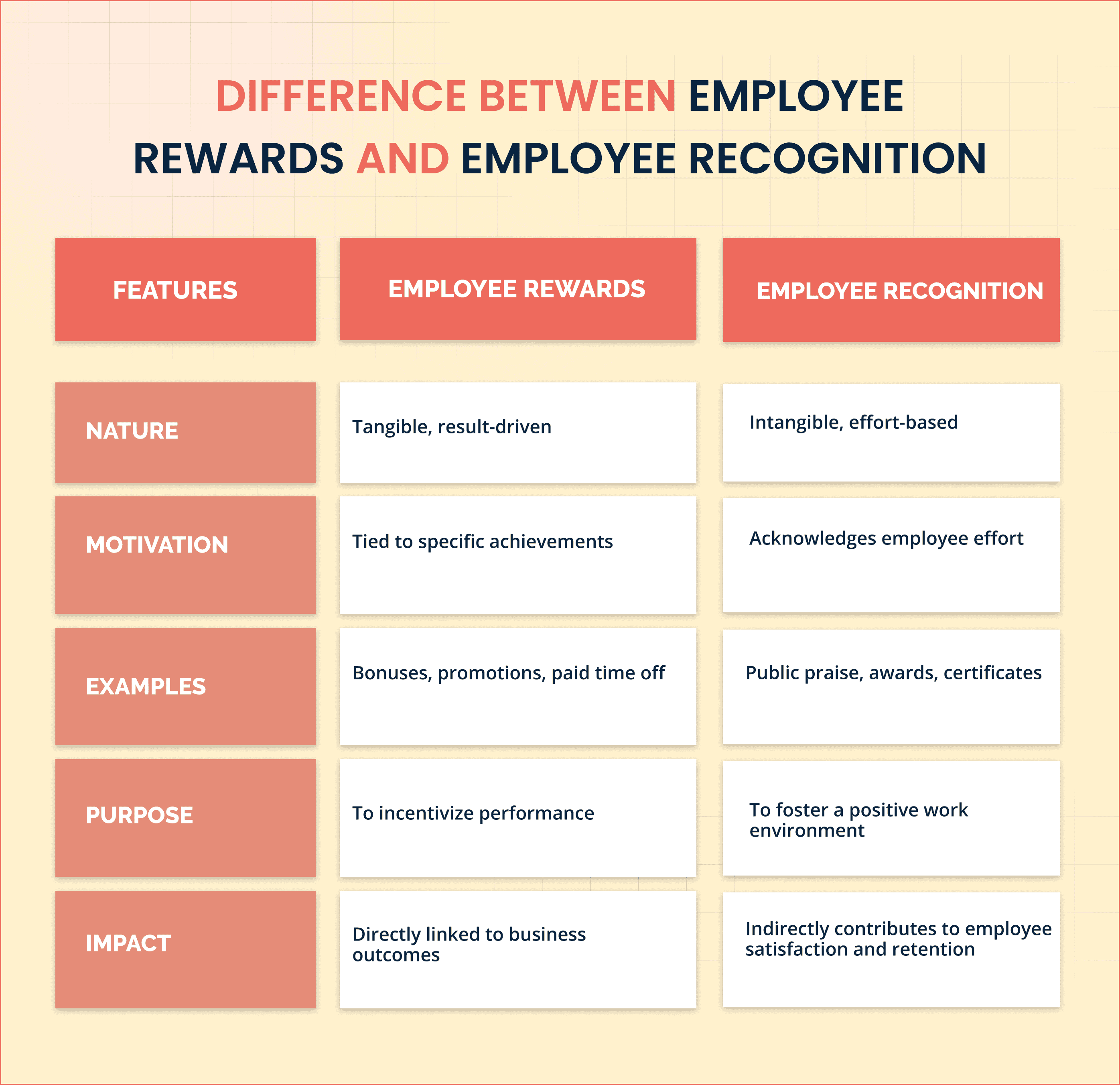
Since mostly employee rewards and the term employee recognition are used rather synonymously, it is important to draw an understanding of the difference between the two. For they tend to serve different purposes in a workplace.
Employee performance rewards are bonuses that are given to employees in return for certain achievements or performances as a means to ensure employee well-being as well.
They are tangible in nature, and it is understood by employees that there are certain actions that will give them bonuses or rewards.
For an employee, achieving a goal like hitting the target sales of the month or completing a project on the very first day and not compromising with deadlines is all reward-worthy. This helps in the overall business success and company mission.
So, it is tied to result-driven metrics. They can be in the form of monetary and non-monetary rewards that are given to the employees.
This is a powerful motivator for a more productive and effective workforce.
Company recognition efforts are more unpredictable and do not have a clear result-driven metric to them. It is about acknowledging an employee’s effort in the workplace.
It can be in any form, whether formal or informal, ranging from a ‘thank you’ note from the employer to an exceptional performance—the employee of the month award.
This also encourages a more stable environment, taking into consideration the employee’s behavior and overall effort.
This ensures that the employees feel more validated and comfortable in the workplace, especially one that contributed to their career advancement. Ensuring overall productivity rises in organizational culture.
The key benefits of the employee rewards program include:
Employees feel more satisfied in their job roles knowing that they are seen and appreciated through company recognition efforts.
Sense of Accomplishment - This sense of accomplishment from being validated at work and being valued for the employee's time ensures an elevated sense of job satisfaction within them as well.
Such a culture of appreciation and recognition of rewards encourages employees to adapt to or even encourage healthy competition amongst themselves.
High Performance Levels - They tend to promote high performance levels, and employees' time dedication increases for the sense of reward that is offered to them at their workplace.
Employees tend to be actively participating when there is an understanding that they are recognized for their efforts.
Motivation to work - This also elevates their motivation to work, resulting in increased employee engagement.
Rewarding employees is a means of social recognition that brings an elevated sense of morale, as seen in the employees of the company that get such positive reinforcements for their efforts.
It creates a happy working environment, making employees feel like they belong there and are an important part of a team.
This is yet another significant benefit of having a positive employee culture ensuring there is no reason to leave the company or get away from the company culture.
Building the best requires the best steps. This also requires a great balance of strategy and the ability to be flexible with its priorities as well. The key steps to creating such a rewards strategy include:
Define the fundamental goals of your program or what it's aimed at. For example, it can be employee retention, satisfaction, creating a more supportive work environment, and more.
The assortment of employee rewards should be done after being able to understand what to provide to them in a strategy or as employee performance rewards; that will ease the process of making the best rewards strategy.
If it's possible, it is always better to offer custom rewards for specific employees as a means of letting them know how important they are and, moreover, giving them reasons to recognize their individual contributions or trying to tailor rewards to employees' preferences.
When it comes to optimizing your employee rewards programs, technology solutions like CompUp can make a significant difference. CompUp is a Total Rewards management tool that helps organizations design, implement, and track rewards programs with ease.
CompUp provides a unified platform where HR teams can manage all aspects of rewards and recognition.
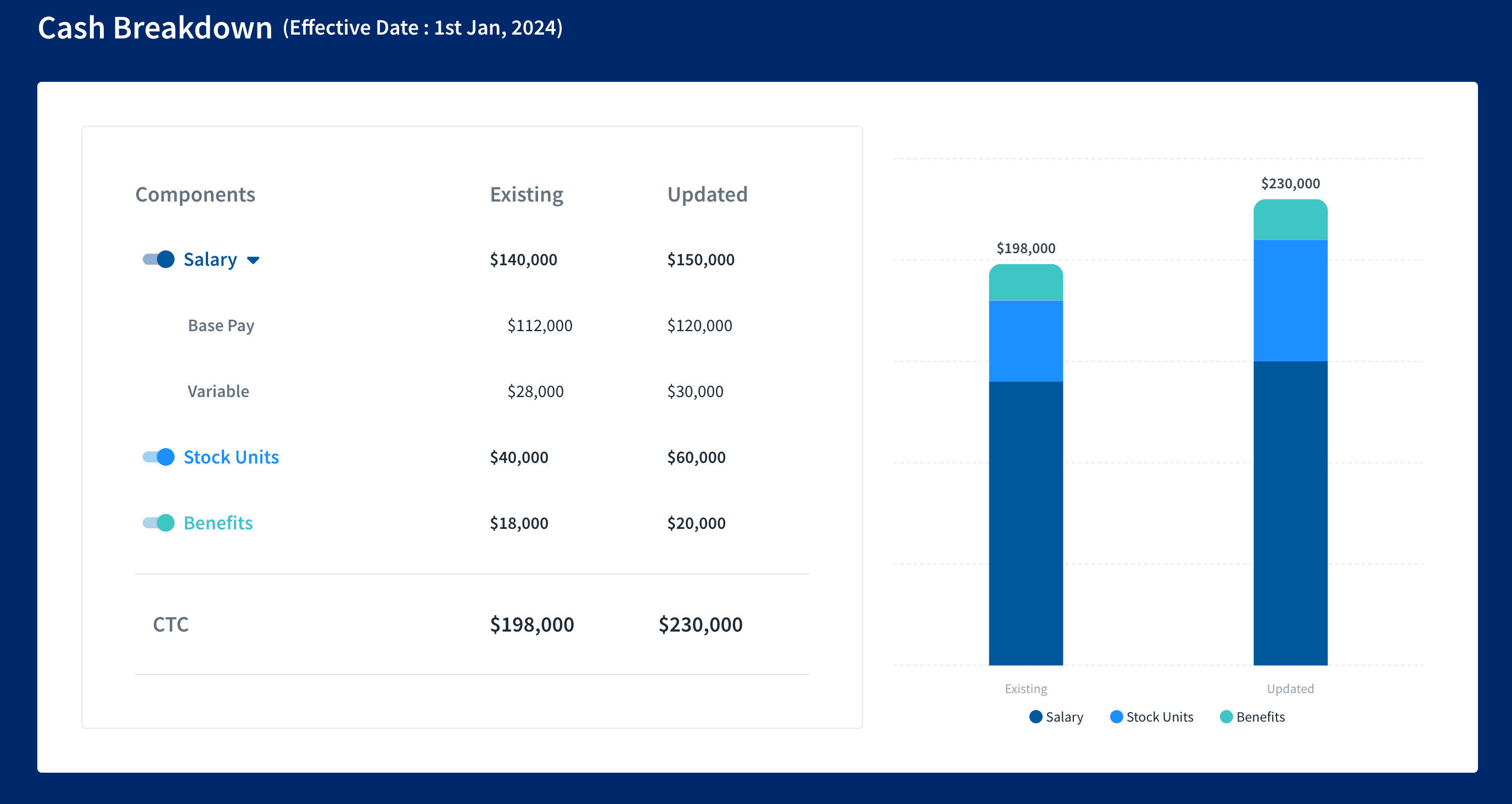
The platform also monitors vesting schedules for employee stock options and provides relevant analytics for easy interpretation.
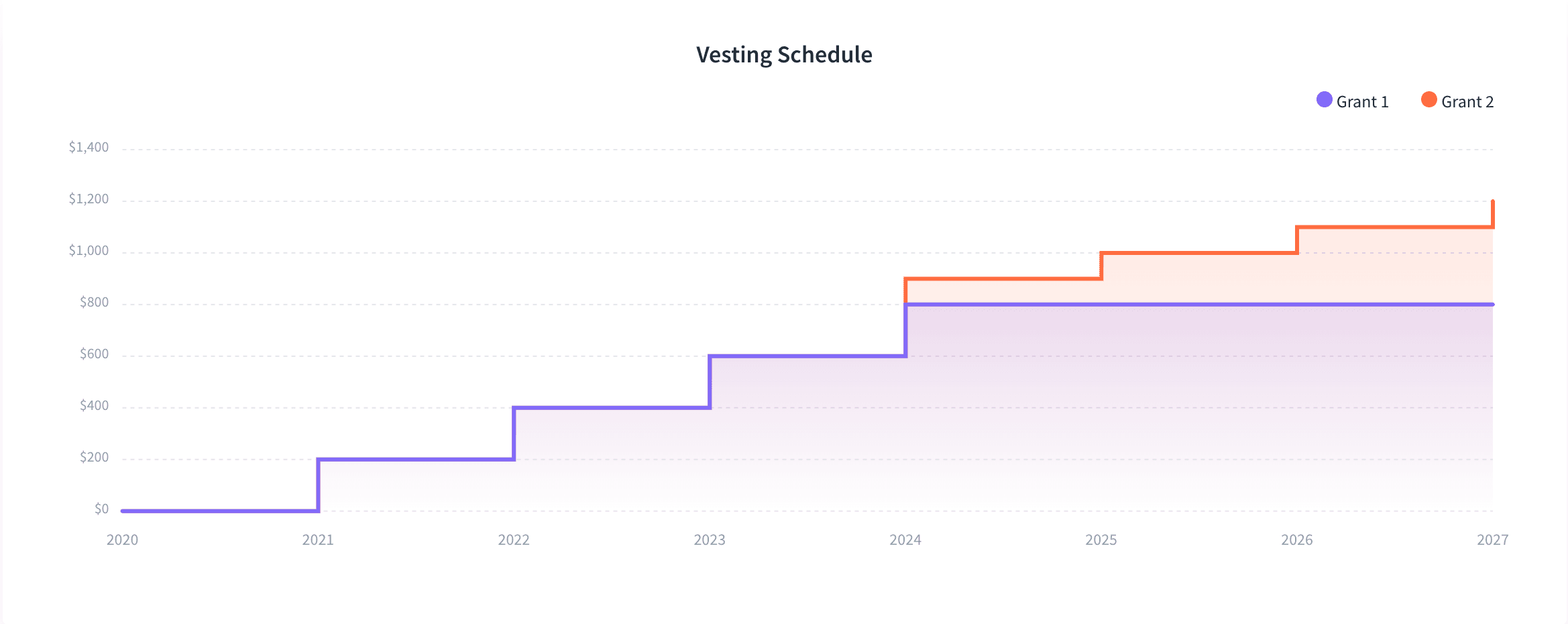
CompUp’s total rewards statement includes a section that displays an employee’s overall income growth within the company, along with future projections to assist with financial planning.
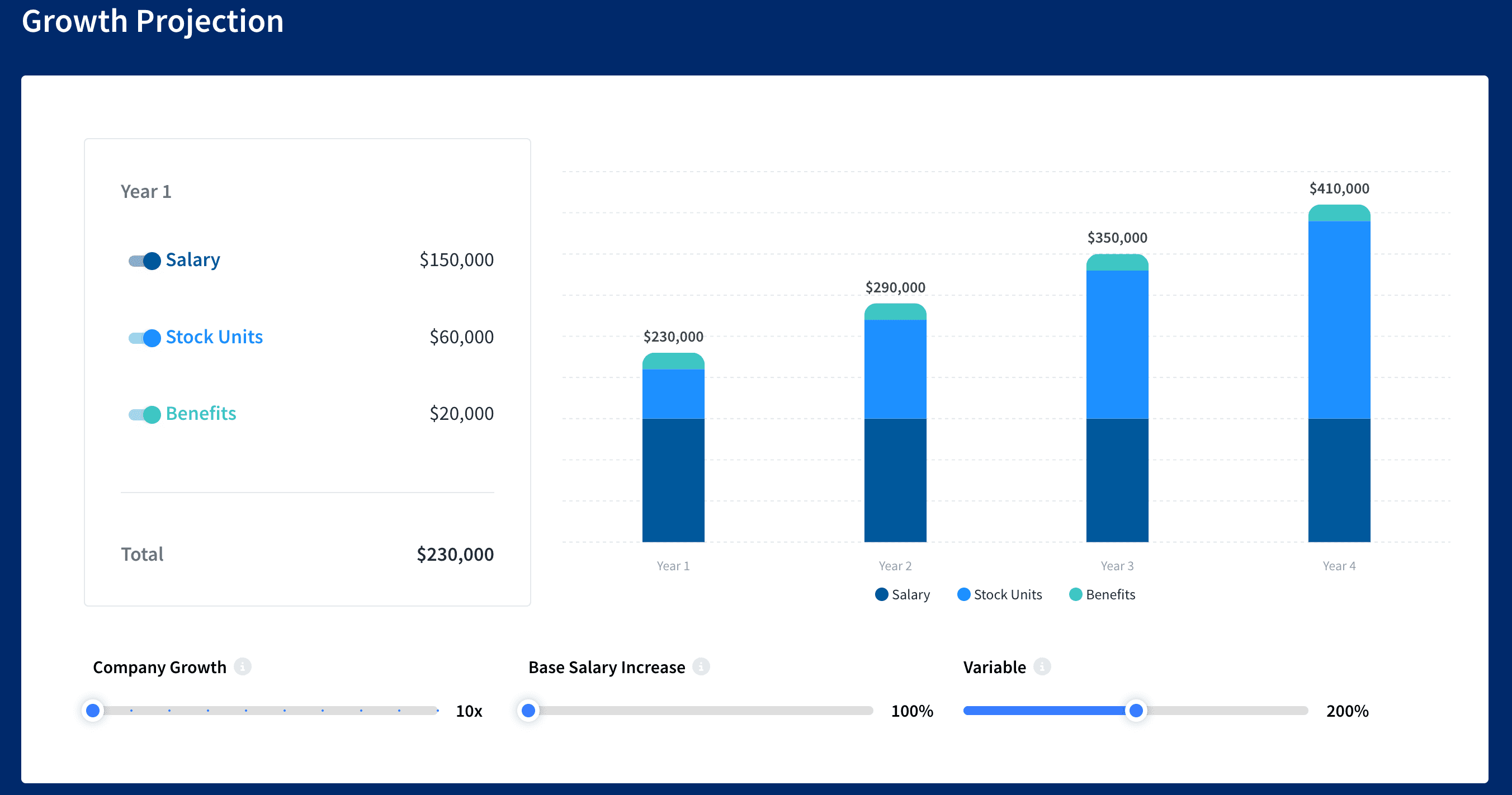
CompUp offers a dedicated section for employees to view all available benefits, ensuring full transparency of the total rewards package provided by the company.
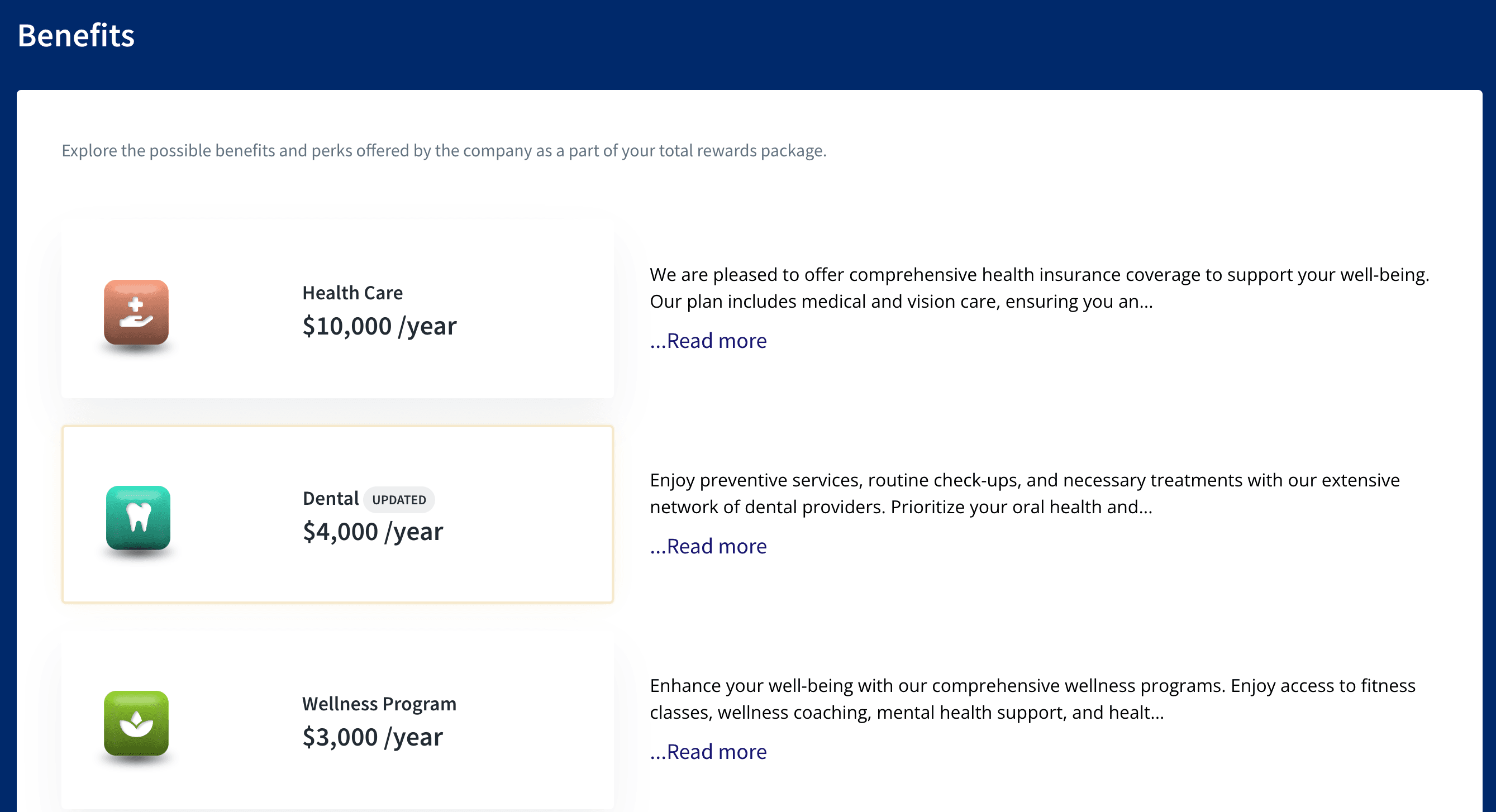
Click here to know more about the features of CompUp’s total rewards statement.
Revolutionizing Pay Strategies: Don't Miss Our Latest Blogs on Compensation Benchmarking